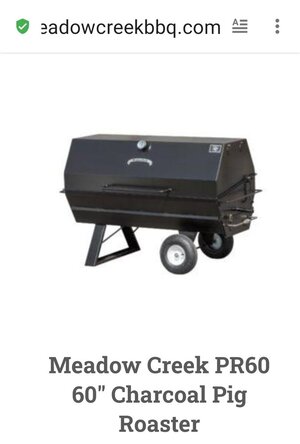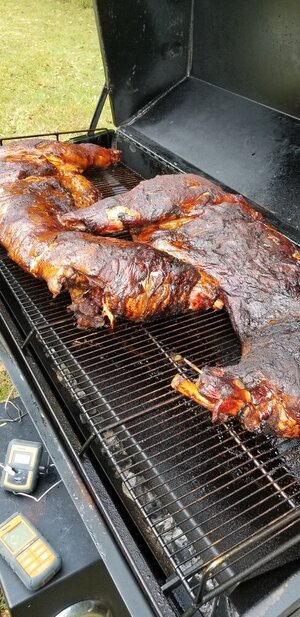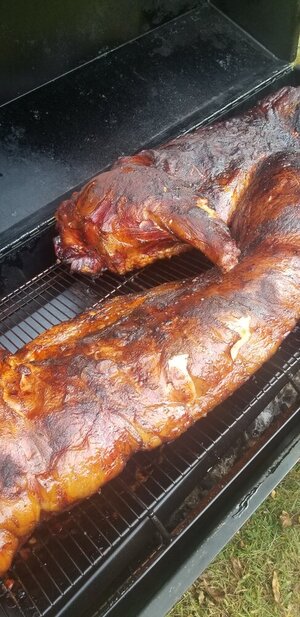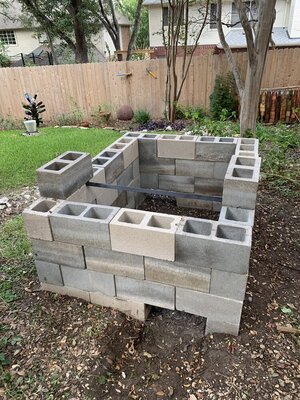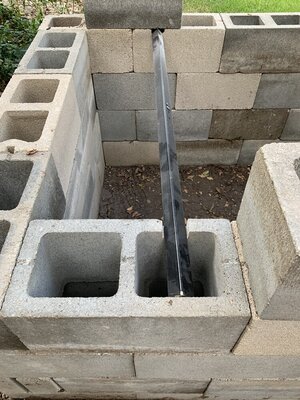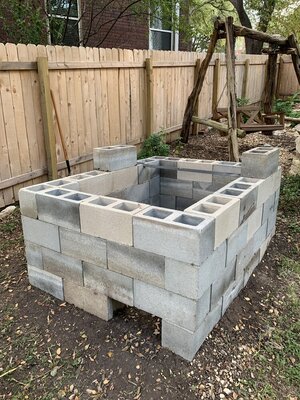I turn 60 in January and I'm planning a whole hog roast. Thinking of building a design like below in terms of size for a cinder block pit.
Seems like you don't want to be too big on the interior dimensions or else its too much work to try and maintain heat and if you go too small then the hog won't fit.
A lot of builds I've read about talk about the venting shown below to provide the necessary airflow for the fire. This all seems to make sense and I think a design like this would work.
My two questions are related and have to do with placing the fire under the hog.
From my reading it looks like you want to either place the coals in the 4 corners of the pit or you spread them along the interior pit perimeter. Seems like a vastly different
burn depending upon where the heat is placed. Some directives have coals covering the bottom of the pit - but as several other designs mention it can create a grease fire
quickly. What is the preferred method for placing coals?
The subsequent question is how do you keep feeding the fire with hot coals to maintain the necessary temperature? Some build plans show openings on either end to shovel into
and some seem to be stating that you can use the draft control openings shown in the image below to shovel in coals. I can't figure out how either option is going to provide the
necessary maneuvering needed to spread the coals around the perimeter. Is this why its suggested that the heat only be placed in the 4 corners - along with the idea that the shoulders
and hams need the most heat. If you want to spread the coals around the interior perimeter do you take the lid off, remove the stretcher/hog and then shovel in the coals? This seems excessive
because from what I've read it could be as often as 30-45 minutes when coals need to be added.
Maybe I'm over complicating and there's an easy solution but I'm trying to think through my build along with my roasting plan to make sure the cook goes as well as can be expected
for a first timer.
Any and all feedback, comments, suggestions are welcome. If I'm way off base with my design direction let me know as well.

Seems like you don't want to be too big on the interior dimensions or else its too much work to try and maintain heat and if you go too small then the hog won't fit.
A lot of builds I've read about talk about the venting shown below to provide the necessary airflow for the fire. This all seems to make sense and I think a design like this would work.
My two questions are related and have to do with placing the fire under the hog.
From my reading it looks like you want to either place the coals in the 4 corners of the pit or you spread them along the interior pit perimeter. Seems like a vastly different
burn depending upon where the heat is placed. Some directives have coals covering the bottom of the pit - but as several other designs mention it can create a grease fire
quickly. What is the preferred method for placing coals?
The subsequent question is how do you keep feeding the fire with hot coals to maintain the necessary temperature? Some build plans show openings on either end to shovel into
and some seem to be stating that you can use the draft control openings shown in the image below to shovel in coals. I can't figure out how either option is going to provide the
necessary maneuvering needed to spread the coals around the perimeter. Is this why its suggested that the heat only be placed in the 4 corners - along with the idea that the shoulders
and hams need the most heat. If you want to spread the coals around the interior perimeter do you take the lid off, remove the stretcher/hog and then shovel in the coals? This seems excessive
because from what I've read it could be as often as 30-45 minutes when coals need to be added.
Maybe I'm over complicating and there's an easy solution but I'm trying to think through my build along with my roasting plan to make sure the cook goes as well as can be expected
for a first timer.
Any and all feedback, comments, suggestions are welcome. If I'm way off base with my design direction let me know as well.


